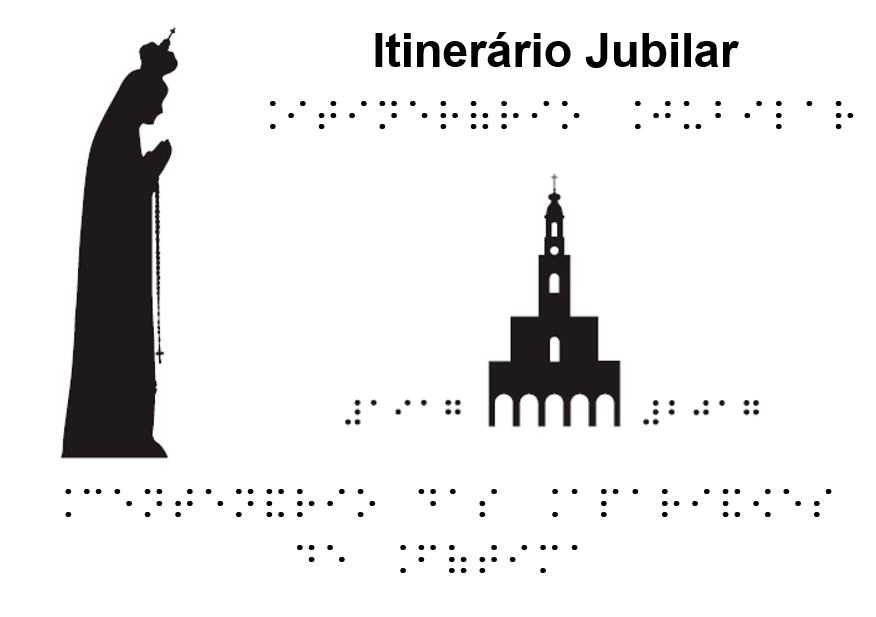05 may, 2017

The Shrine of Fatima will be the first in the World to be distributing a printed multi-format leaflet/ guide intended for blind pilgrims, and for pilgrims with reduced intellectual capacities or low literacy skills. This project was developed in partnership with the Center for Digital Inclusion of the Instituto Politécnico of the city of Leiria (CRID/IPLeiria), which is a reference in the inclusion domain, and which was awarded with various national and international prizes. As an outcome of such partnership, and on the occasion of the Centennial of the Apparitions in Fatima, we will be releasing the inclusive Jubilee Itinerary in two versions: in Braille, with embossed images, that can be read by blind people and in a pictographic system for communication (pictograms) for people with reduced intellectual capacities or low literacy skills. Therefore, the Shrine of Fatima will be “the first actually inclusive shrine in the world”, underlined Célia Sousa, Coordinator for the CRID/IPLeiria. “We proposed the Shrine to create inclusive guides so as to emphasize this date which is essential in the local as well as in the national history. The rationale of the CRID is to work for a more inclusive and egalitarian society, and it really made sense to turn such a spiritual and religious event that brings thousands of people from all the world to Fatima into a moment accessible to all. Our proposal was most welcomed”, she referred. For Pedro Valinho, Director of the Pilgrims Department, it is just a natural step to give as far as “welcoming is the key word in the Shrine of Fatima’s mission”. “We know that those that assemble in Fatima come with the conviction that they will find there an expression of the motherly care of Mary. In that sense, the Shrine has been looking for an inclusive answer that allows all the pilgrims to get there, and particularly those facing difficulties to access to the message and to the space of the Shrine”, he added. Therefore, such initiative allows, during this year of celebration of the Centennial, “the Shrine to get always closer to be the true reflection of this motherly care in which there is a place for all”. The partnership is considered as “natural, given the proximity of both entities and the long-standing collaboration links between the Shrine and the Instituto Politécnico of Leiria, and the excellency of the CRID, which is totally unique at national level. As was the case three years ago in the context of the celebration of the Sunday Mass at 3:00 pm in the Basilica of the Holy Trinity, the Eucharist of the Centennial will also be inclusive celebrations, being attended by an interpret of the Portuguese Sign language, a researcher from the research unit Inclusão e Acessibilidade em Ação (iACT) of the Instituto Politécnico of Leiria. In addition, various initiatives have also been promoted by the Shrine of Fatima so as to include people with reduced mobility, or presenting hearing or visual impairments. The CRID/IPLeiria also originated the creation of the first Braille library of the country and edited and co-edited inclusive children’s books, making up for a serious gap in Portugal regarding the offer of books for kids with special needs. Among the works edited, it is worth highlighting Piu Caganita, the first multi-format book printed in the country and adapted to all kinds of kid’s reading capacities: blind, deaf, with reduced intellectual capacities and, of course, without deficiencies. The IPLeiria is also collaborating with the Shrine for the realization and maintenance of the Mural de Testemunhos (Mural of Testimonies), a work based on pilgrims’ testimonies, anonymous yet with a face, that are peregrinating to the Shrine of Fatima. Available from the 8th of December at the address muraldetestemunhos.fatima.pt and through all the year of the Centennial of the Apparitions, the Mural, permanently actualized, currently includes 83 testimonies, from Portuguese or foreign pilgrims, priests and religious. The construction of the Mural, as well as the gathering of all the testimonies, has been completed in the context of the Media and Communication course of the Escola Superior de Educação e Ciências Sociais, of the Instituto Politécnico of Leiria, also in charge of the edition and post-production of the videos. |